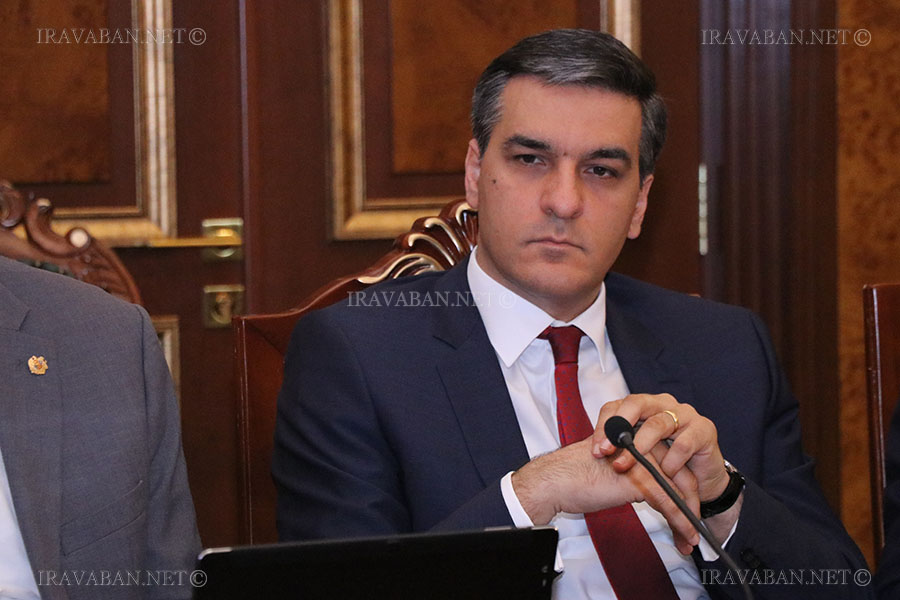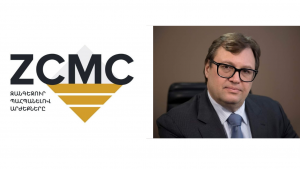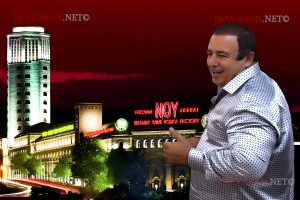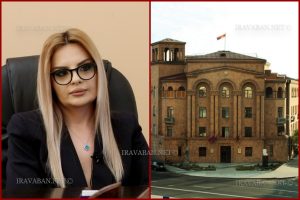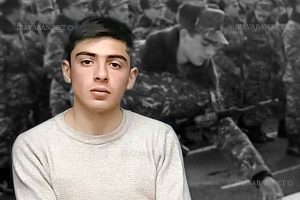Today marks the 33rd anniversary of the Armenian massacres of February 27-29, 1988 in the city of Sumgait, Azerbaijan. The RA Human Rights Defender Arman Tatoyan wrote about this on his Facebook page.
1. The Sumgait massacres started in 1988, in the evening of February 26. It was immediately followed by killings, and burning of Armenians alive, paralyzing of Armenian communities, and destroying their homes and belongings.
2. This marked the beginning and continued atrocities against Armenians in Gandzak (Kirovabad), Baku, Maragha, Shahumyan, and more than 320 other Armenian-populated towns and villages.
Just in the city of Gandzak in 1988, there were 45,000 Armenians who lived there.
3. Violent violations of the rights of Armenian civilians took place in all of the above-referenced places, they were brutally killed, including the barbaric deprivation of life of children, women and the elderly, all tortured to death and their bodies mutilated.
Thousands of Armenians were forcibly displaced from their places of permanent residence. Homes and personal belongings of civilians were destroyed.
4. Only 2 examples:
1) From April 29 to Mid-August of 1991, the Azerbaijani Special Police Detachment (OMON) carried out Operation Loop, as a result of which the Armenian populations of Khanlar, Shahumyan, Hadrut, Shamkhor, Ghazakh and Getabek regions were deported.
2) On April 10, 1992, in the village of Maragha in the Martakert region, the Azerbaijani armed forces carried out the ruthless destruction of the civilian Armenian population, where the death toll reached 57. Most of them were women, children and the elderly, who were burned both before and after being murdered.
5. Moreover, all of this was done by the gangs in the conditions of the most permissiveness of law enforcement, and in some cases with the direct participation of those agencies.
6. The staff of the Human Rights Defender of Armenia possesses reliable, including objective evidence, which confirms all that has been described.
7. It is a proven fact that the described atrocities took place in response to the steps taken by the Armenians of Artsakh to protect their right to life, security and other vital rights, in order to restore their inalienable right to self-determination.
8. The facts prove that the referenced atrocities against Armenians were committed exclusively on the basis of ethnicity; and, that they were of the nature of deportations and destruction of properties.
To be clear, we are speaking about the Azerbaijani policy of ethnic cleansing and genocide, which was based on state-sponsored hatred of Armenians, and which was directed against Armenians.
9. Evidence confirms that in the following years, the state policy of hatred of Armenians and propaganda of hostility towards Armenians underwent new developments. The killing of Armenians and the torture of Armenians were escalated to open encouragement by the highest authorities in Azerbaijan.
10. The concrete evidence of this is the 2004 brutal murder of the Armenian officer Gurgen Margaryan by an Azeri army officer Ramil Safarov during an international training course in Budapest in his hotel room while he was asleep. He was later extradited to Azerbaijan and thereafter, not only was he released, but he was also praised at the highest levels.
11. In the case of Makuchyan and Minasyan v. Azerbaijan and Hungary ”(complaint no. 17247/13), the European Court of Human Rights in 2020 noted that pardoning Ramil Safarov in Azerbaijan, granting him privileges, encouraging him at the highest state level, and the glorification by the entire society of Azerbaijan was ethnically motivated. According to the European Court, this was evidenced by the statements of high-ranking officials, where they expressed their support for the heinous act.
12. Against the population of Artsakh in April of 2016 and during the September-November 2020 wars, the Human Rights Defender’s Office of Armenia recorded atrocities on the basis of ethnicity by the Azerbaijani armed forces, including the brutal killings, torture, and humiliation of Armenian civilians and servicemen. All of this was done by the Azerbaijani armed forces and the terrorists involved, who were filming videos and, obviously convinced that they would go unpunished, cynically showing with open faces how, for example, they beheaded an Armenian, cut off his ear or desecrated his body.
13. Those wars were preceded by and in parallel with them, accompanied by the hatred of Armenians and the encouragement of the continuation of the Armenian Genocide with greater aggression. There are also reports as to these atrocities which are based entirely on objective evidence.
14. The hatred of Armenians, the state policy of causing suffering to the Armenian society, playing with emotions and causing tension continues to this day in Azerbaijan. This is clearly evidenced by the capture of Armenian civilians and servicemen and their non-return for artificial reasons, the constant politicization of the issue, and making the matter one that is improperly a subject of bargaining.
15. Unfortunately, the strong disproportionate response of the international community, and especially those of the international human rights bodies to the atrocities described, and in many cases simply their silence, not only contributed to the 1988 atrocities and hatred of Armenians being repeated, but a deepening of such hatred, atrocities and escalation of the severe abuse.
16. The Human Rights Defender of Armenia, on behalf of himself and his entire staff, pays tribute to the memory of the innocent victims of the Armenian pogroms in Sumgait and the other communities victimized be these heinous crimes.

